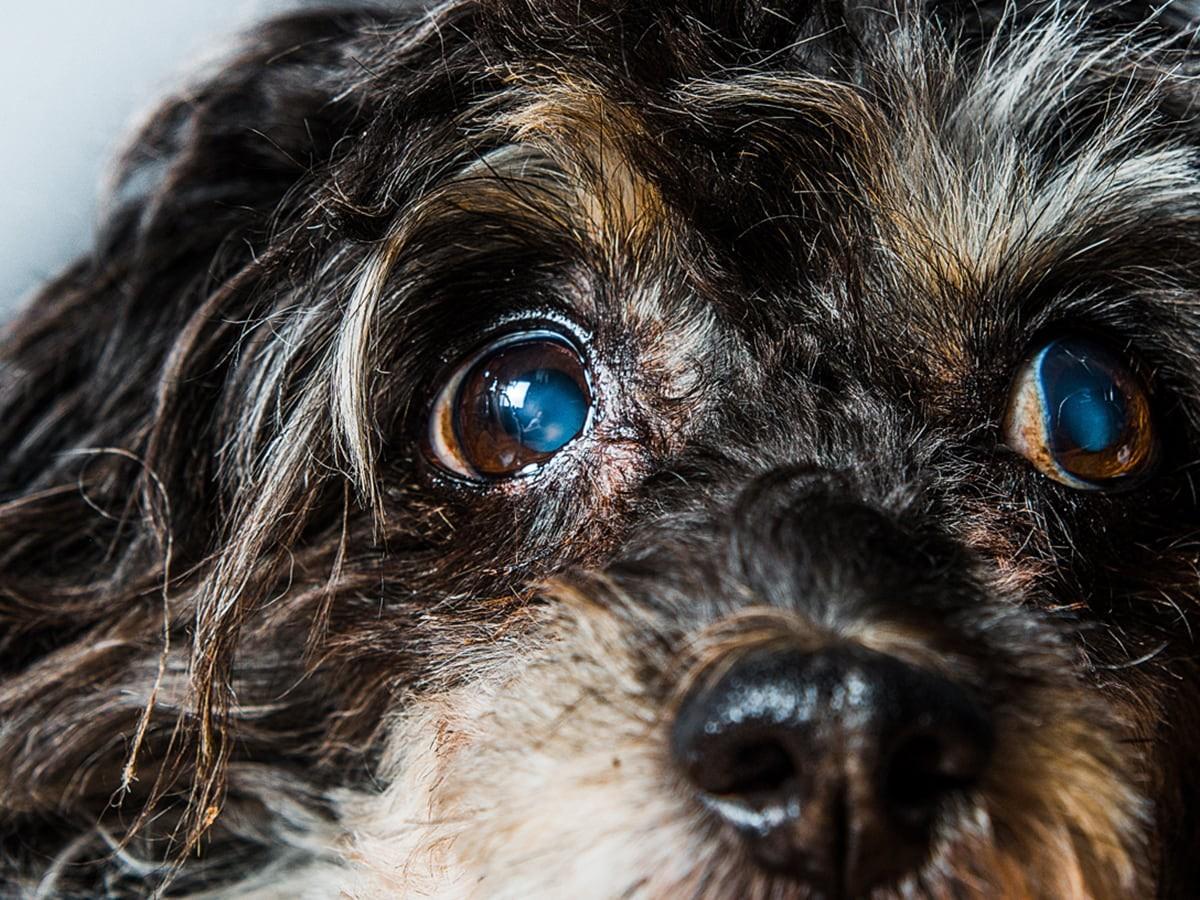Just like us, dogs and cats use their eyes for many things from walking and playing to enjoying the sunshine and chasing squirrels. Cataracts can quickly impair our beloved pet’s ability to see and lead to confusion or disorientation. Today, we’re going to break down what you, as a loving pet parent, need to know about cataracts in pets.
What Are Cataracts in Pets?
A cataract occurs when the lens of a pet’s eye becomes opaque, leading to impaired vision. Cataracts give the eye a cloudy, white appearance and can cause partial to full blindness in that eye. Often, cataracts are not severe enough to fully blind the eye and instead lead to blurred vision in the affected eye.
The causes of cataracts vary, but both cats and dogs are highly susceptible to developing at least one cataract when they suffer from diabetes. In particular, diabetic dogs or diabetic cats are prone to developing cataracts. Some studies estimate that within 16 months of a diabetes diagnosis, about 80% of canines will have developed at least one cataract. Other common causes of cataracts include genetic predisposition, trauma to the eye, old age, electric shock, and hypocalcemia, which occurs when an animal has too little calcium in the blood.
Many of the causes of cataracts in pets, such as genetic predisposition or old age, cannot be helped. However, regular veterinary care can help prevent other health problems, like diabetes, that are major risk factors in whether or not your pet develops a cataract. Pet insurance can help you to provide your pet with ongoing, quality veterinary care to do just that.
What Are The Side Effects of Cataracts in Pets?
While cataracts are not usually painful, they can cause a variety of unpleasant side effects.
Some of the most common pet cataract side effects include:
confusion or disorientation
bumping into things or suddenly becoming clumsy
chronically red eyes
pawing or scratching the eyes
squinting
eye socket inflammation
the affected eye “bulging” out of the eye socket
vision problems
If the affected eye is heavily inflamed, your pet may experience some discomfort, but as a whole, cataracts do not generally cause pain. However, if your pet experiences ongoing inflammation inside the affected eye, this can lead to other eye problems like glaucoma and retinal detachment. Consult with your veterinarian for the best treatment options for your pet’s cataracts and to assess if your pet is at risk of further developments.
What Breeds Are Most At Risk of Developing Cataracts?
While any dog or cat can develop a cataract, some breeds are more prone to them based on their genetics. For example, dogs with more prominent, “bulgy” eyes like Boston Terrier, Pugs, and French Bulldogs are more prone to eye health issues, such as cataracts, as a whole.The Veterinary Centers of America note that the following dog breeds are the most prone to developing cataracts:
The Veterinary Center of America notes that the following cat breeds are most prone to developing cataracts:
These are just a few of the most susceptible breeds. Keep in mind that any dog or cat can develop a cataract regardless of their breed.
How Are Pet Cataracts Treated?
Cataracts are usually treated via cataract surgery, which removes the affected lens or part of it to improve vision.
Incipient cataracts, which cover less than 15% of the eye’s surface, rarely require treatment because they minimally affect vision. If caught early, prescription eye drops may be used, but a pet will need to undergo cataract surgery to have the cataract removed in most cases.
What Is The Cost of Cataract Treatment In Pets?
Cataract surgery can be costly. Canine cataract surgery usually costs between $3500 to $4500 per eye, while feline cataract surgery costs about $3500 per eye. Oral supplements and eye drops are also frequently prescribed to help with the side effects of cataracts.
While cataracts do not tend to be painful, they can heavily affect the quality of your pet’s life, from decreasing their ability to chase after a ball or walk steadily to increasing your pet’s risk of other eye diseases, such as glaucoma.
A cataract diagnosis can be heartbreaking as we always want the best for our beloved pets. To learn more about your best treatment options for pet cataracts, consult with your veterinarian today.
Getting a dog insurance or cat insurance policy while your pet is still young helps you get reimbursed later in their life if they develop cataracts or other conditions like diabetes. Don’t hesitate! Give yourself and your pet peace of mind knowing that should the worst happen, you’ve got them covered.

With 10 years of experience as a pet parent, I aim to empower pet owners with insights into pet insurance and maintaining their pet's well-being. I aspire to be a trusted source, combining knowledge with a commitment to the welfare of our beloved pets.












